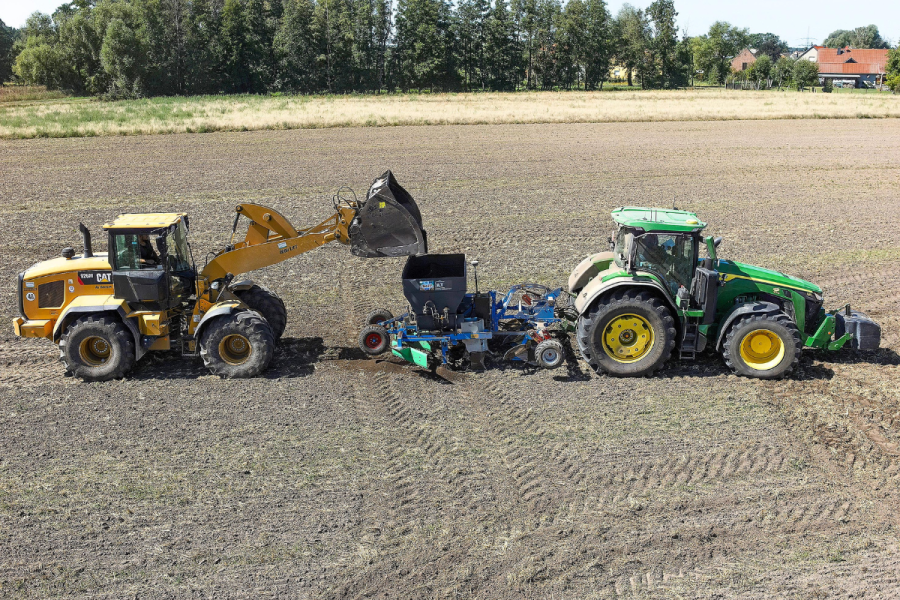TECHNICAL: How can yields be safeguarded when the climate is in such a state of flux? Are there methods that can better promote the supply of water and nutrients? The University of Bonn has been researching these questions since 2016.
The research team at the Institute of Agricultural Technology (ILT) considers condition of the subsoil to be a key factor in preventing drought stress due to nutrient and water deficits. The compost
serves as a reservoir for drier periods as long as the plant root has gone deep enough.
Stabilising soil with compost
The research team at ILT found that organic material in the subsoil increases soil fertility and enhances soil life — not just in the subsoil but in the topsoil, too. By adding compost to the subsoil, plants developed more roots and produced more biomass. Based on these findings, the team developed a patent-pending, tractor-mounted machine that incorporates solid substrates into the subsoil. it’s called Soil3.
Deep soil improvement
The Soil3 subsoiler cultivates the soil at two different depths. Once the plough body has pushed the top soil or A horizon to the side, rotted compost is mixed into the deeper level (B horizon, 30-60cm). The amount of compost applied varies between 3 and 4kg/m² or 30 to 40t/ha. The ‘improved’ strips are 30cm wide and spaced about 100cm apart. Sandier soils require a slightly smaller spacing. The team recommends doing the work during the summer months because the subsoil is neither too dry (high tractor power requirement) nor too wet (pores clog). After the improving pass, it is best to grow a catch crop before following with the regular crop.
For more up-to-date farming news click here and subscribe now to profi and save.






